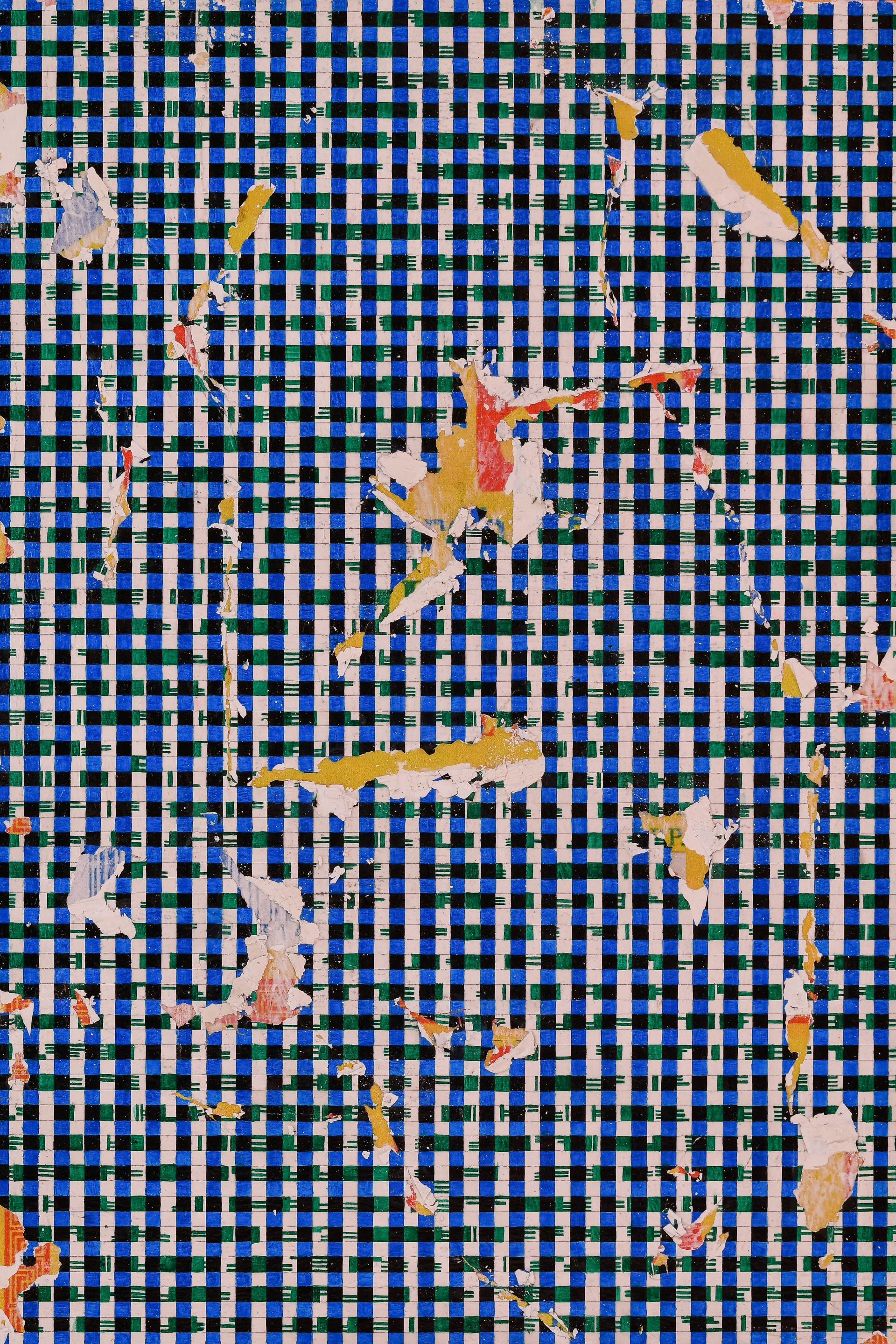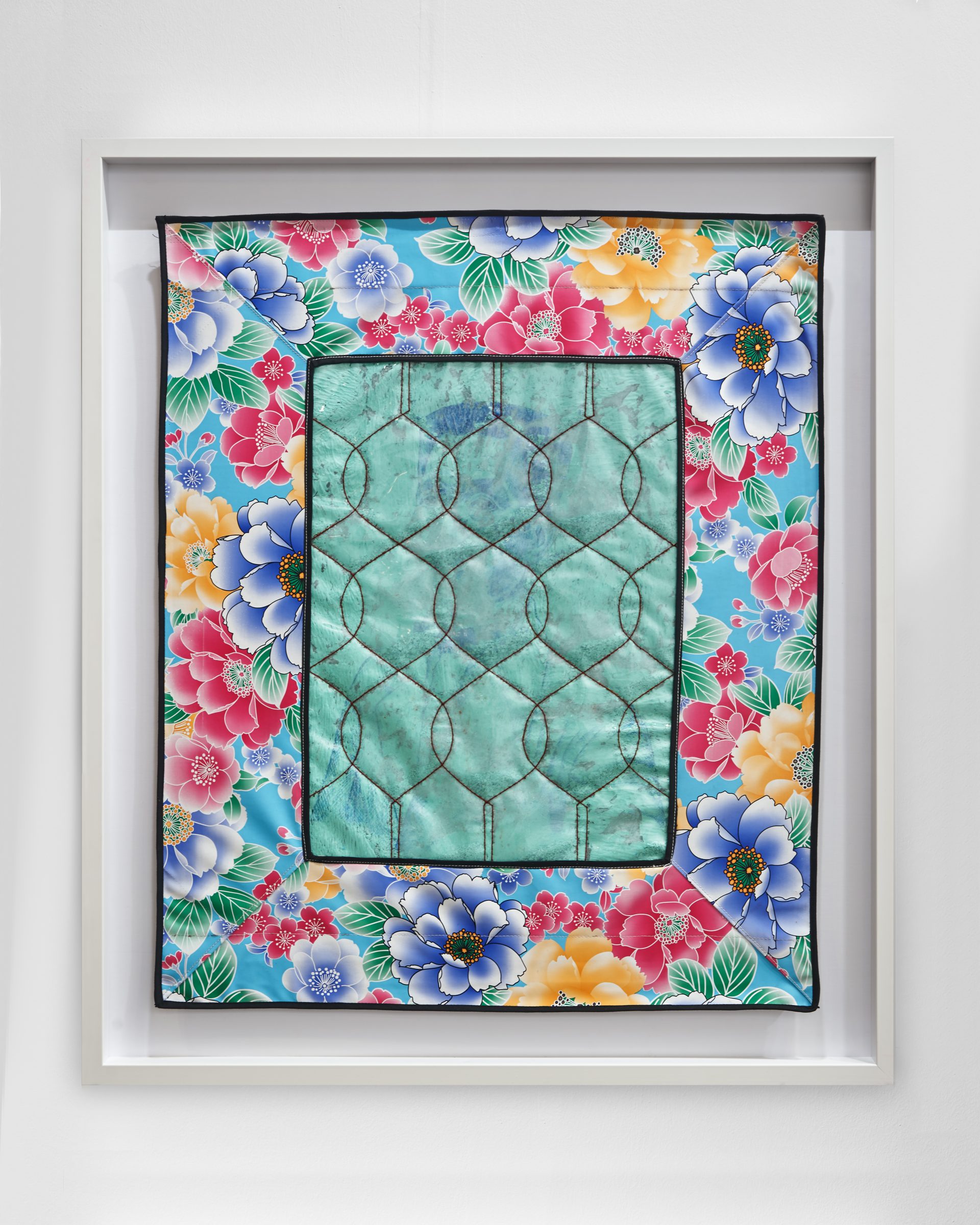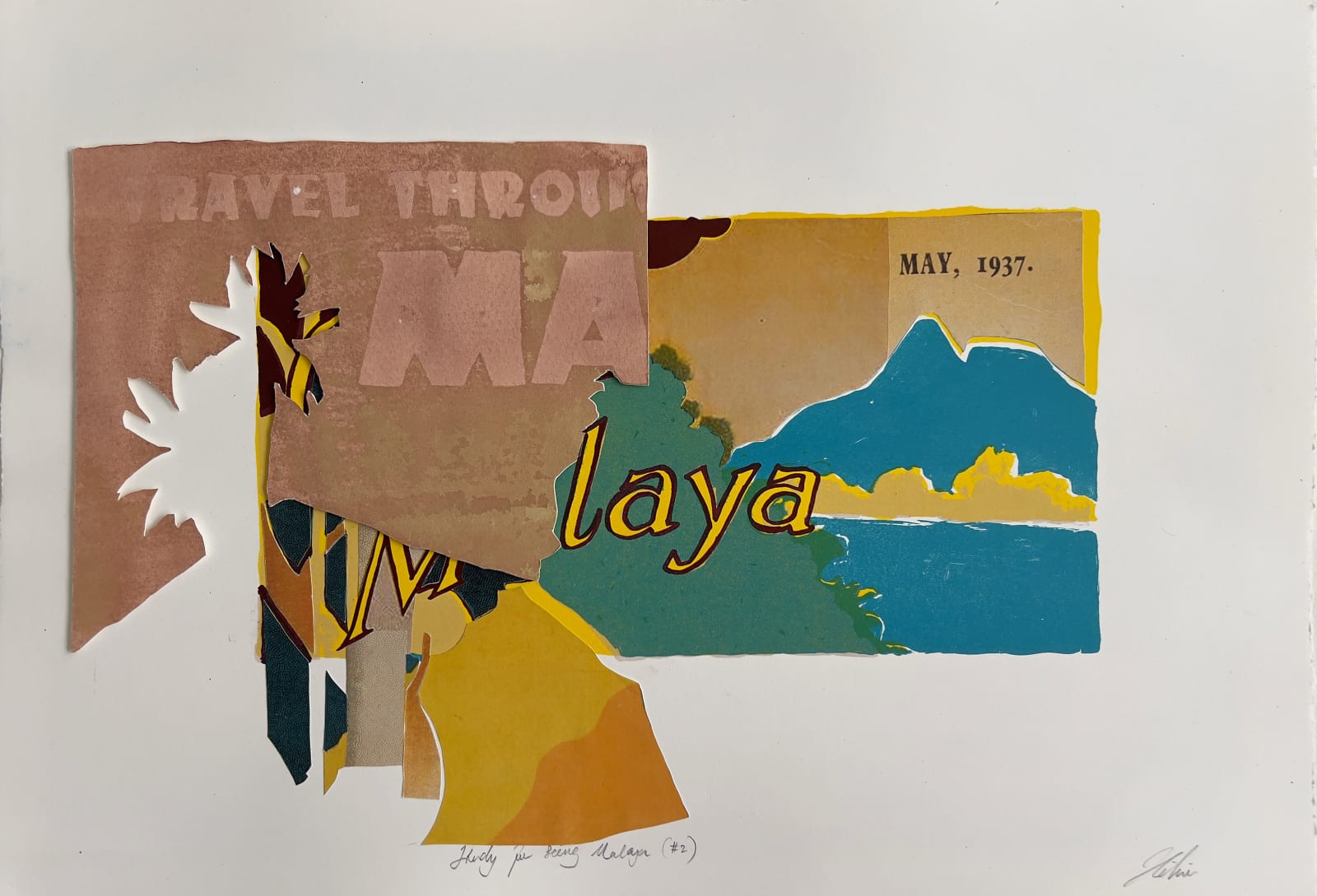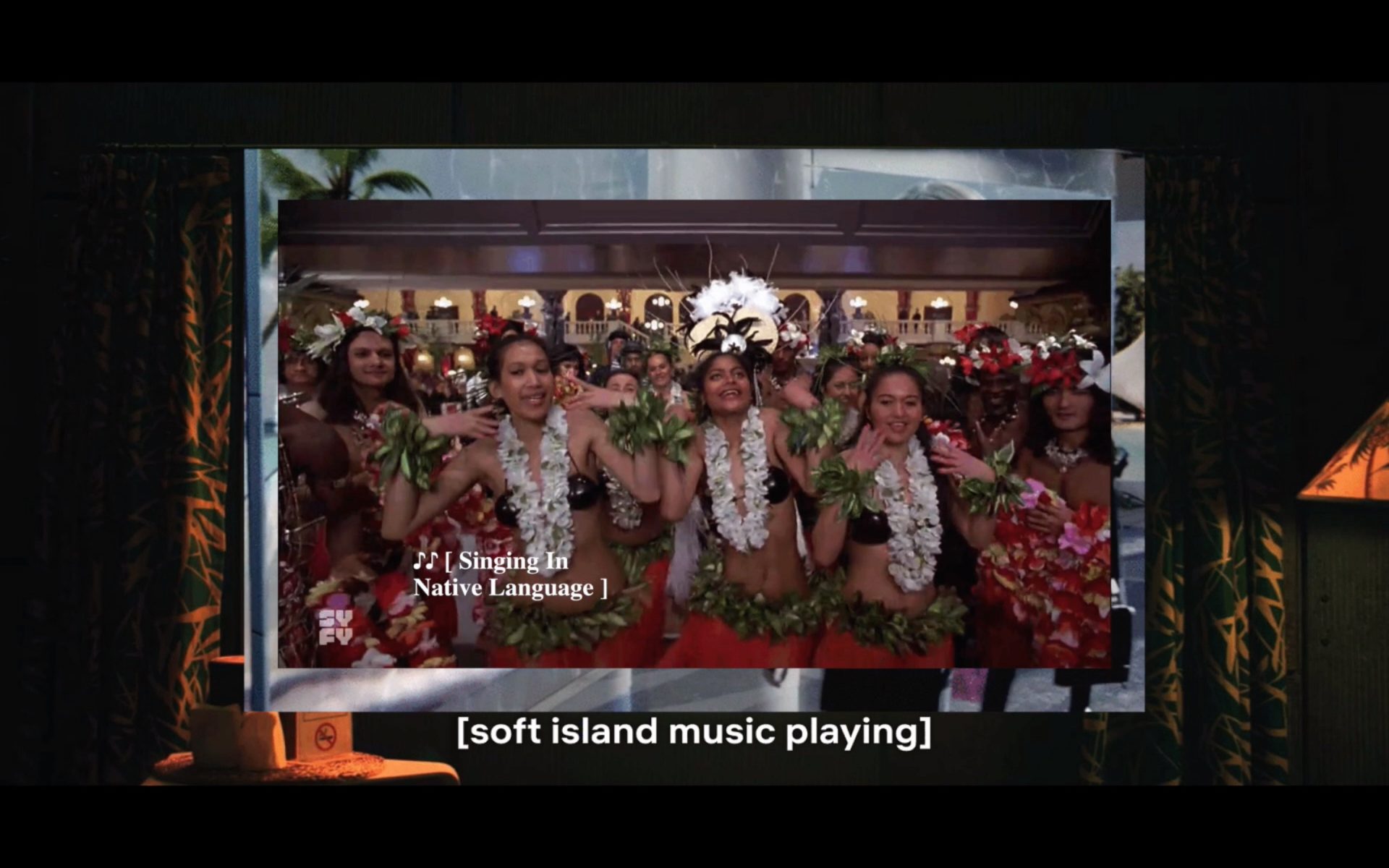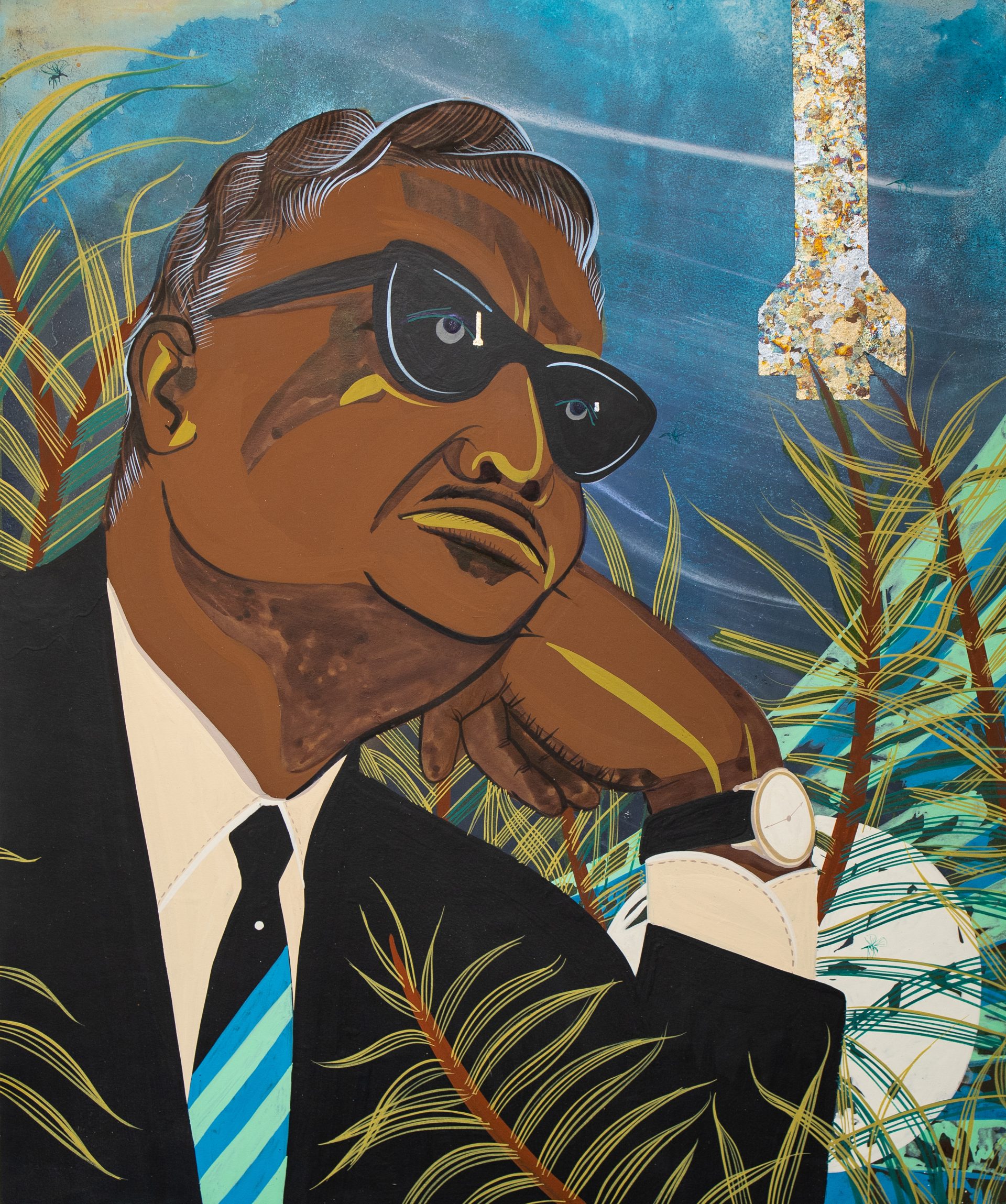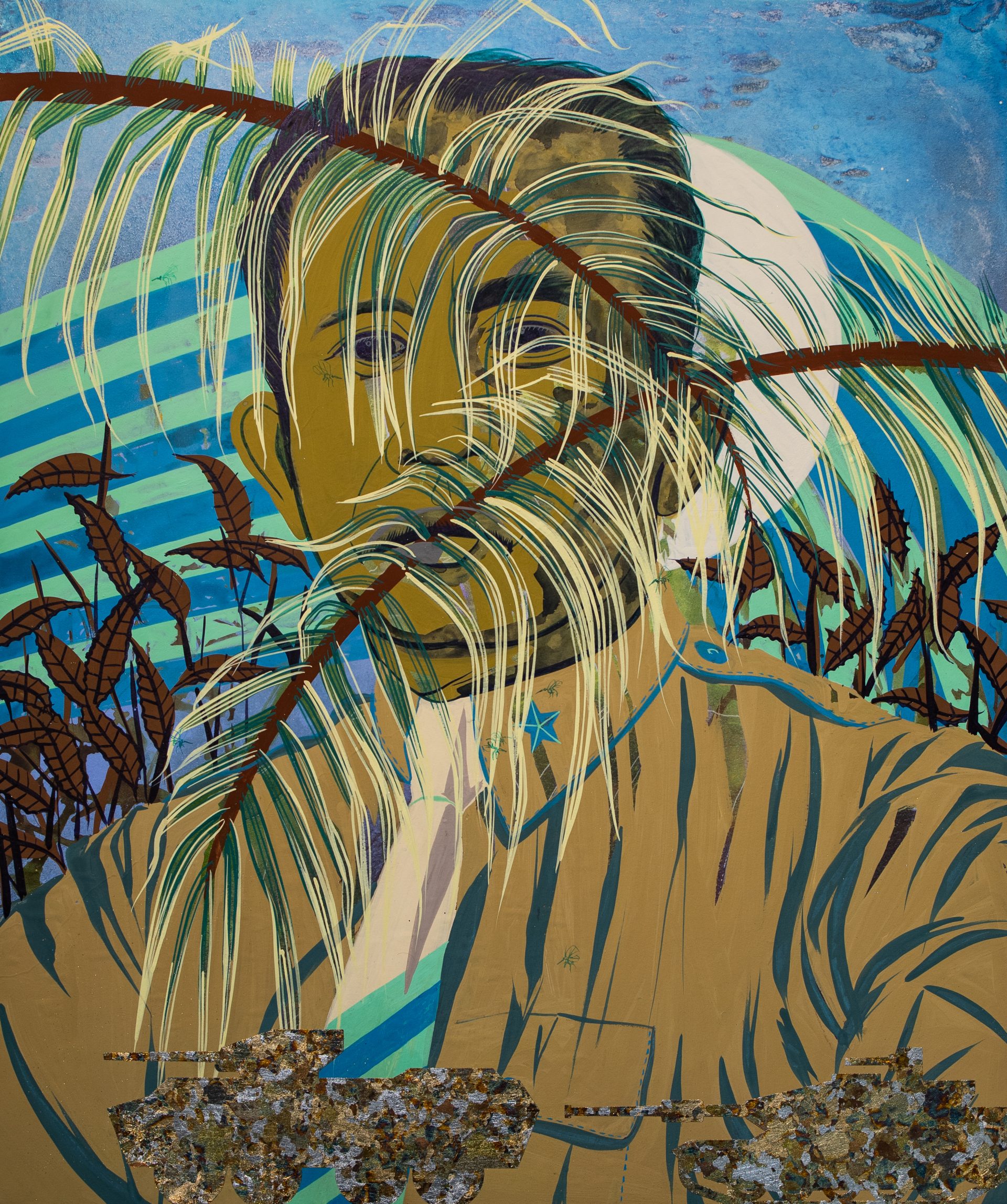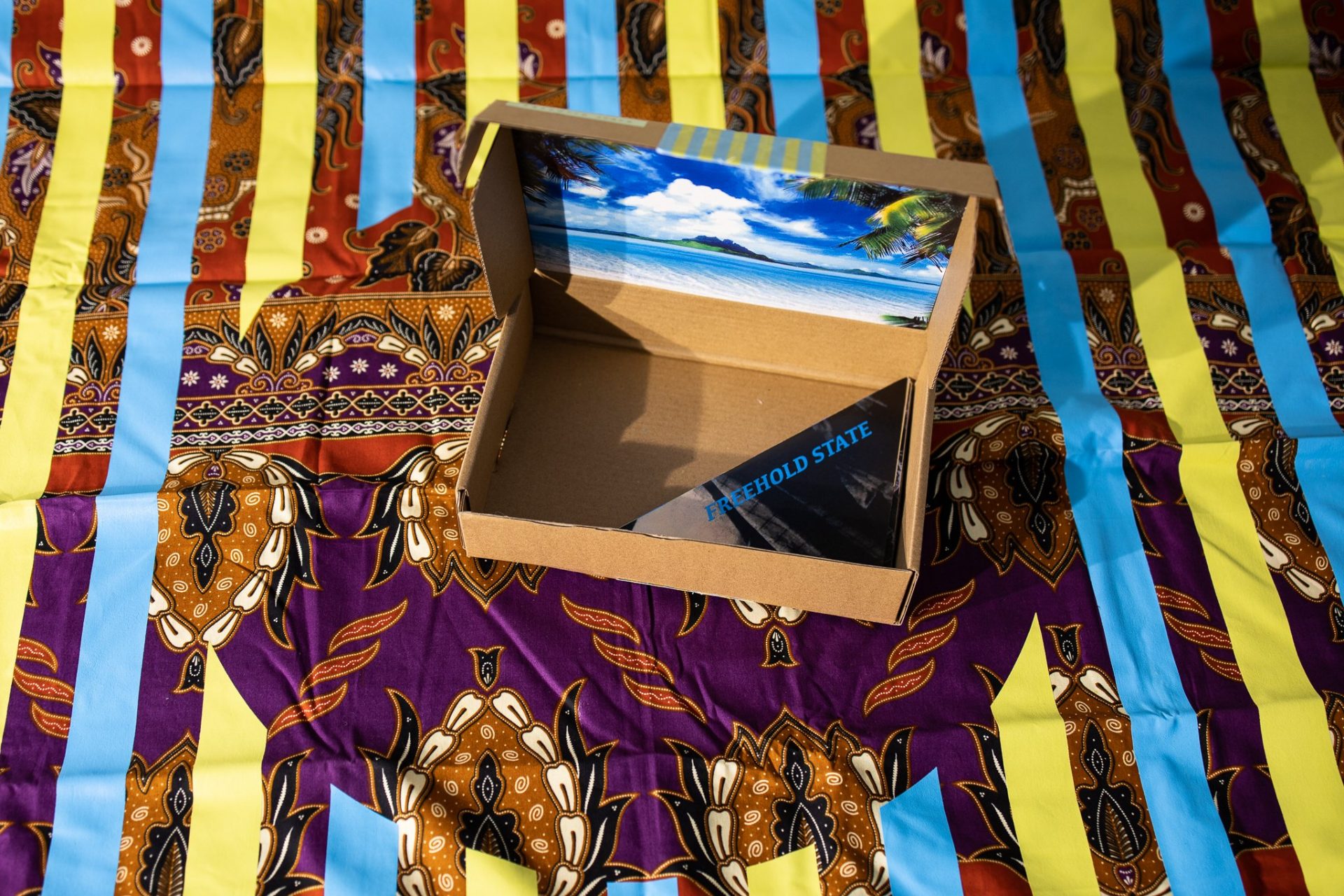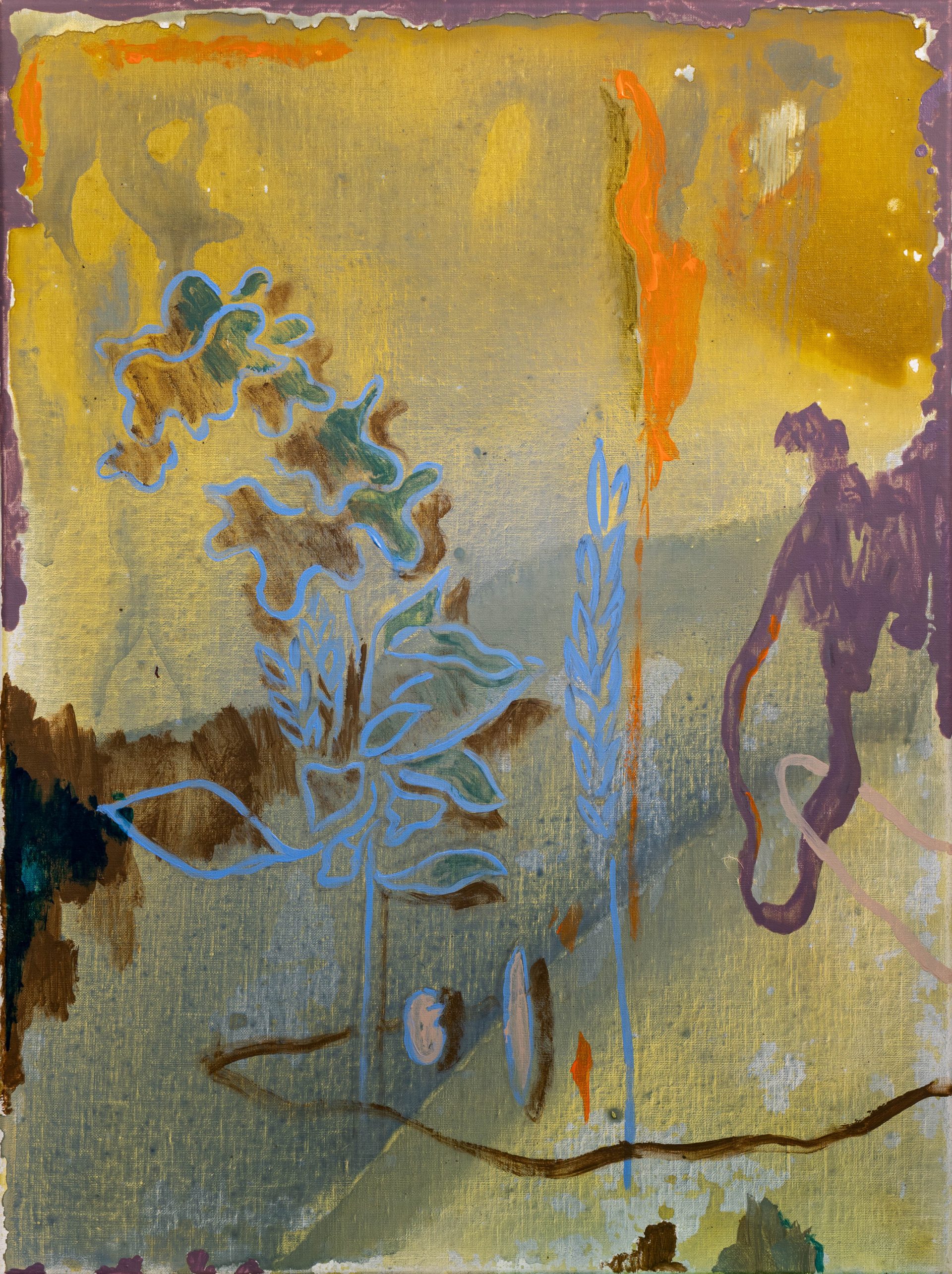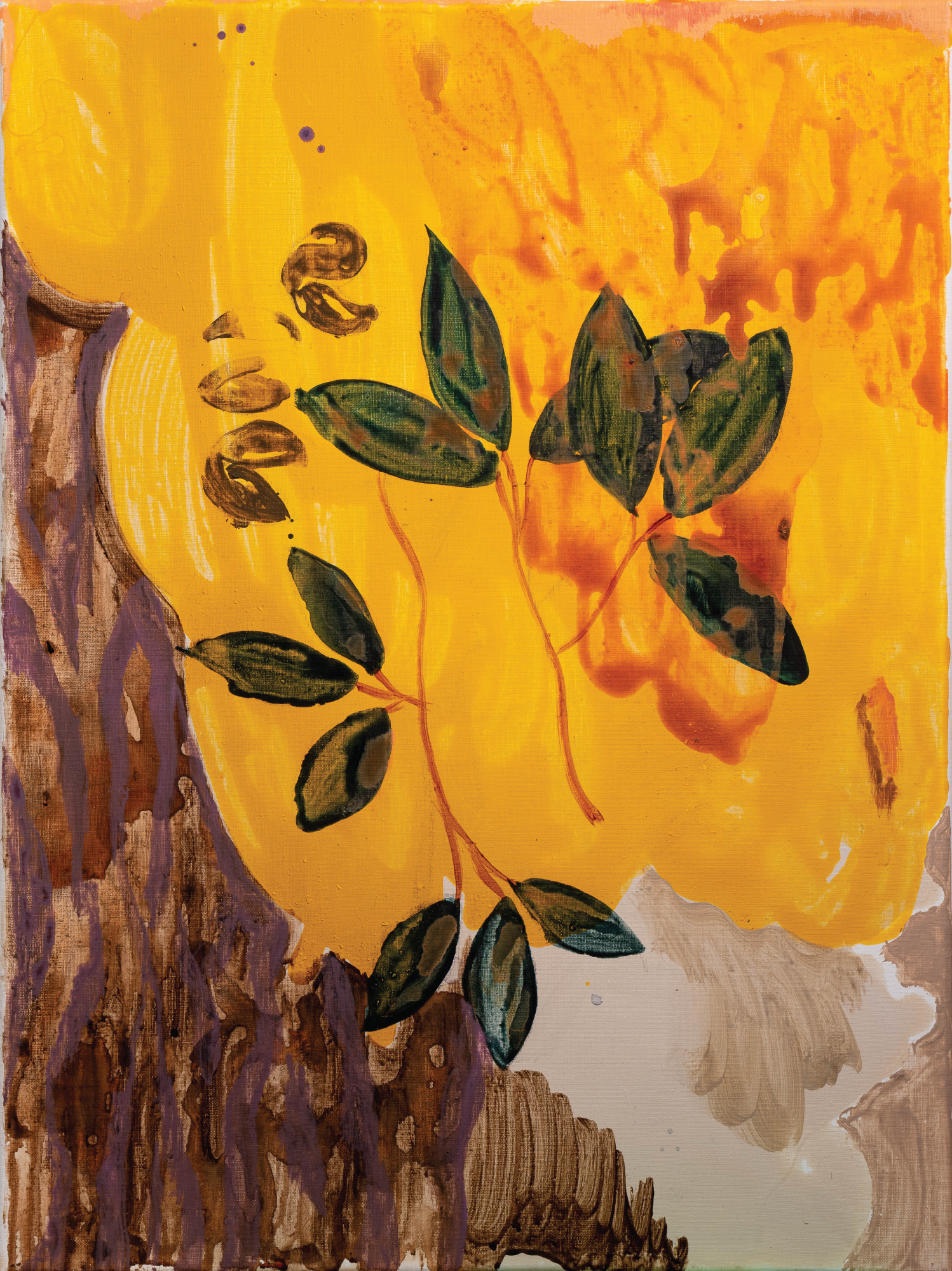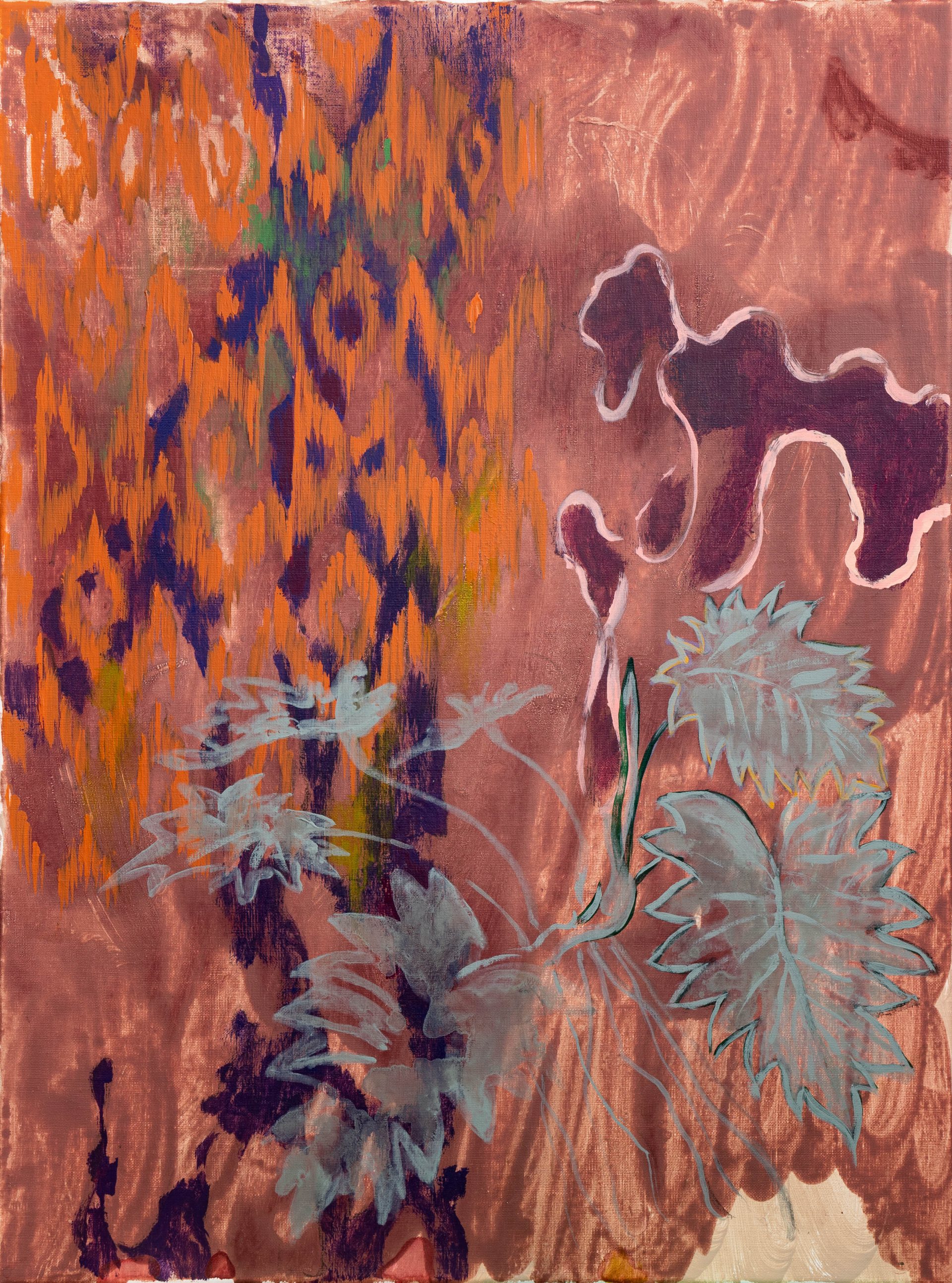NEW TROPICS

New Tropics explores notions of the tropical through the work of contemporary artists of Southeast Asian origin. Spanning a breadth of mediums and approaches, their works interrogate what ‘the tropics’ have come to mean or signify, while addressing and subverting its tropes and assumptions. Drawing on the language of tropicality to assert their agency and identity, the artists in this exhibition ask what it means to make work in and about the tropics, and how these may be read within a global discourse.
New Tropics is open to public from 21 Nov, 2023 – 18 Feb, 2024.
Wawi Navarroza‘s self-portrait presents an exuberant tableau open to multiple significations. The artist stages herself as a modern-day odalisque, recalling the trope of the exotic ‘other’ colonized by the West(ern gaze); but here, with her frank stare, the reclining female figure reigns sovereign. At the same time, her posture also suggests that of the reclining Buddha, bringing into the frame an alternative reading. The explosion of colour and objects that fill the frame to the brim recall tropical tropes: ripe, swelling fruit, plants, patterned textiles. This excess and pastiche are informed by Navarroza’s reading of Filipino writer Nick Joaquin’s notion of the Tropical Gothic: a heady mix of East and West, ornamentation, the blending of the esoteric and vernacular, high and low, and all the incongruities that make up the culture and lived experience of the Philippines. In the artist’s words, this saturated collage is “a compendium of material history and local cultures”, a testament to her lived experience as someone born and raised in Philippines, but also a worldly traveler. Navarroza’s work is a dazzling visual record of ‘all the places she’s gone’, subverting the conventional notion of the tropics and its inhabitants as passive ‘discoveries’ made through colonial expeditions and conquest.
The work of Kristoffer Ardeña is inspired by the material conditions of living and working in the tropics. In his search for materials and methods intrinsically rooted in the cultural context of Filipino life, Ardeña has composed ‘paintings’ from everyday materials such as multi-purpose and multi-functional tarpaulin, pieces of consumer packaging familiar to every home in the Philippines, and elastomeric paint, an industrial material capable of withstanding the tropical climate. In doing so, Ardeña challenges conventions of ‘fine art’ and ‘painting’ inherited from an Euro-American tradition, choosing to create works that are more attuned to local conditions and ways of life. His Ghost Paintings for instance, make reference to the modernist grid, but rather than declaring the formal autonomy of art by excising all extraneous content, Ardeña’s grids are imbricated with the stuff of everyday life, recalling the colourful patterns of woven basahan rugs and littered with advertising images.
Similarly, his repurposed election posters subvert the genre of portraiture with its human subjects relegated to the background, overshadowed by images of tropical flora. A portrait of Philippines’s first President, Emilio Aguinaldo, is rendered with latex paint on plastic, directly inspired by Ardeña’s observation of the effects of weathering on the embroidered leatherette seats in jeepneys. The portrait is intended to crack and disappear over time, countering inherited notions of painting’s permanence and legacy – a poetic acknowledgement of the ephemerality of the tropics, and the visual culture of the everyday.
The tropics have long been imaged and imagined as a paradisiacal escape. The work of Hilmi Johandi draws on imagery of old Singapore and Malaya, largely taken from postcards, tourist advertisements and other ephemera projecting a certain nostalgic or utopian ideal of tropical destinations. The strategy of collage utilized in Hilmi’s works reveals the constructed and staged nature of these images, allowing for interesting juxtapositions as well as displacements, while picking apart tropical tropes.
These ideas are also explored in Astria Suparak’s video-essay. Tropicollage is a looped video featuring footage from thirty years of futuristic or sci-fi movies and television shows, depicting a fetishized vision of the tropics and its inhabitants. From Total Recall (1980) to The Fifth Element (1997) and Minority Report (2002), ‘the tropics’ are presented as an unchanging, idyllic escape, populated by ‘natives’ who strangely have not ‘advanced’ along with the rest of civilization, trapped in an endless, self-perpetuating loop of sunsets, sandy islands, palm trees and anonymous, interchangeable coloured bodies.
Visions of a futuristic tropical utopia inspired Tammy Nguyen’s body of work, titled Freehold. The starting point for this series was a real-life development called Forest City in Johor Bahru, Malaysia, built on reclaimed land and touted as a “smart and green futuristic city that combines environment and cutting-edge technology to create an ideal, idyllic and technology-driven living and working space ecosystem”. This vision for a tax-free, tropical utopia, where there is “no climate change” (as promised to Nguyen during her investigative visit in 2019) is translated into a fictional flag for Forest City comprising alternating green and blue stripes, representing the unchanging land and water of an eternal tropical idyll. These stripes appear in the background of a series of four portraits of imagined leaders for the fantasy nation of Forest City. Significantly, these leaders were key figures at the 1955 Bandung Conference, where 29 newly-independent African and Asian countries convened to discuss the role of the Global South in an unfolding new world order, a watershed moment of solidarity and self-determination. By the 1960s however, this idealistic ‘spirit of Bandung’ had all but dissipated; likewise, Forest City is largely considered a failed project, deserted and falling into disrepair. The yoking together of this ambitious building project with the historic Afro-Asian Conference provokes a consideration of tropical utopias and the destinies they attempted to chart – their premises, promises, and legacies.
While the countries at the Afro-Asian Conference sought to shake free the shackles of their colonial past, artist Khairulddin Wahab engages with these histories by proposing alternative means of seeing and mapping the (natural) world. Much of his work centres on revisiting the taxonomies inherited from colonial institutions that propose a rationalisation and intellectualization of natural phenomena, thus eclipsing magical or animistic ways of inhabiting the world. The Herbaria Sheet series references botanical drawings by Juraimi bin Samsuri (the eponymous J.S. in the artwork titles), one of the first local illustrators employed by the Singapore Botanic gardens (itself a colonial project) back in the 1950s. Seeking to restore to the natural world a sense of the magic and reverence with which it was formerly regarded, Khairulddin transforms the clean, precise lines of these illustrations into layered and beguiling images that hold within them stories of spiritual beliefs, material culture and enchantment.
In a similar fashion, Izat Arif questions the institutions and assumptions inherited from the region’s colonial past, that continue to inform and impact many aspects of lived experience in contemporary Southeast Asia, including its cultural production and aspirations. Drawing on the visual language of graphic design, street signs and pop culture, Izat’s pithy, text-based works playfully take aim at some of the strategies adopted by artists from the region to contextualise their artwork and the discourse around it, by capitalizing on their ‘exotic’ origins and singularity in order to distinguish themselves in an art world largely framed and dominated by the West.
Curated by:
Tan Siuli
With thanks to:
All artists
Chris Fussner
Fiona Lim
Kaavya Viswanathan & Joshua Lewin
Mike Tan
A+ Works of Art
Cuturi Gallery
Lehmann Maupin
OTA Fine Arts
Silverlens Galleries
Tropical Futures Institute
Artist bios
Astria Suparak is an artist and curator based in Oakland, California. Her cross-disciplinary projects address complex and urgent issues (like institutionalized racism, feminisms and gender, and colonialism) made accessible through a popular culture lens, such as science fiction movies, rock music, and sports. Straddling creative and scholarly work, the projects often take the form of publicly available tools and databases, chronicling subcultures and omitted perspectives. Over the last two years, Suparak’s creative projects have been exhibited and performed at institutions such as the Museum of Modern Art and the Ford Foundation Gallery in New York; Institute of Contemporary Art Los Angeles; the Walker Art Center, Minneapolis; MoMA PS1, New York, as well as in unconventional spaces such as roller-skating rinks, sports bars and rock clubs. Tropicollage was commissioned by Other Futures, and is part of Suparak’s ongoing research project Asian futures, without Asians. Another work from this series, Virtually Asian, is currently on show at the ArtScience Museum Singapore, as part of the “New Eden” exhibition.
Hilmi Johandi works primarily with painting and explores interventions with new media that are associated within the domain of framing, fragmentation (deconstruction) and compression (reconstruction). His explorations are set in the range of the familiar and symbolic motifs perceived in the context of Singapore. He composes and synthesises images from film, archival footages and photographs into a fragmented montage that hints at the social effects of rapid development, and the personal desires and contempt of those who embrace modernisation.
Hilmi is the recipient of the Young Artist Award 2018, NAC Arts Scholarship (Postgraduate) 2017, LASALLE Scholarship 2017 and the Goh Chok Tong Youth Promise Award. Solo exhibitions include Stagecraft: Landscapes and Paradise, Ota Fine Arts, Singapore (2019), Dusk to Dawn | Fajar ke Senja, OCBC Artspace | Galerie Steph, Singapore (2014) and Framing Camellia, IONArt, Singapore (2014). He also participated in group exhibitions such as: Bit Rot, Institute of Contemporary Art Singapore, Singapore (2018), State of Motion 2017: Through Stranger Eyes, National Library Board, Singapore (2017), Figment of Film, ADM Gallery, Nanyang Technological University, Singapore (2016), Primavera 4, Galerie Frédéric Lacroix, Paris (2015), Portraits in Verses, Fred Torres Gallery, New York (2015), Flux – City of Change, Strata Art, Saatchi Gallery, London (2013). Hilmi is one of the five artist finalists to participate in the President’s Young Talents 2018 with the Singapore Art Museum.
In the multidisciplinary practice of Izat Arif, videos, drawings, and readymade objects are combined into intricately layered installations. His work often conveys an ironic commentary on everyday life and the art ecosystem of Kuala Lumpur. Recent solo exhibitions include Gentle Reminders, Richard Koh Fine Art, Kuala Lumpur, Malaysia; Kenangan itu, hanya mainan bagimu…, Mutual Aid Projects, Kuala Lumpur, Malaysia, and Semangat Kejiranan, Everybody Loves Good Neighbours, The Vitrine, NTU CCA, Singapore. Selected group exhibitions include Motif:Lamaran, ARTJOG Jogjakarta National Museum, Indonesia; Travel Agency, presented by A+ Works of Art, HeluTrans ArtSpace, Singapore; Fragmenting Yesterday, Reshaping Tomorrow, ICAD, Jakarta (2022); and Domestic Bliss, Pollination, co-developed with The Factory Contemporary Arts Centre Vietnam, Ilham Gallery, Kuala Lumpur, Malaysia. In 2022, Izat was a recipient of the ACME-Khazanah Artist Residency in London. Izat Arif is also one of the founding members of the collective Malaysian Artist Intention Experiment (MAIX).
Khairulddin Wahab’s paintings weave narratives drawn from cultural geography, environmental history, and post-colonialism in Singapore and Southeast Asia. Working from archival materials, found images and iconography derived from his geographic and cultural contexts, Khairulddin createa visual tableaus that allude to our historico-political encounters with the natural world.
Khairulddin was the winner of the 2018 UOB Painting of the Year Award, recipient of the inaugural National Library Creative Residency in 2021, and the 2014 Winston Oh Trabel Award. He has exhibited in local and international exhibitions, including Biennale Jogja 2019, SEA Focus and State of Motion 2018, and most recently at AsiaNOW Paris, in 2023.
Kristoffer Ardeña lives and works between Bacolod (Philippines) and Madrid (Spain). Through documentation, production, and writing, Ardeña contributes to the global movement of neo-tropicality – within a movement of cultural self-awareness transpiring through the ‘majority world’, climatic identity discovers its own cultural products and embraces them. He is the founder of MILF (Moving Image Lab Filipinas) curatorial platform and the co-founder of Photoma, an initiative on Philippine contemporary photography.
Individual projects include exhibitions and presentations at Museo Carrillo Gil in Mexico; Selasar Sunaryo Art Space, Ruang Mes 65 and Cemeti Art House (Indonesia); Vargas Museum and the Cultural Center of the Philippines in Manila; (Philippines); Centro de Arte Dos de Mayo Museum (Madrid); La Conservera Centro de Arte Contemporáneo in Murcia (Spain). He has also participated in collective projects, among them the 3rd Bucharest Biennale (Romania), 3rd Guangzhou Triennale (China), Konstholl C in Stockholm (Sweden), Caixa Forum in Barcelona and La Casa Encendida in Madrid, MUSAC in León (Spain), Casino Forum d’Art Contemporain (Luxembourg), Apexart in New York (USA), Museo Ex Teresa Arte Actual (Mexico) and the Museo de Arte Moderno in Medellin (Colombia). Ardeña was featured in international fairs such as ARCOMadrid (Spain), Art Dubai (UAE), and SEA Focus (Singapore).
Tammy Nguyen creates paintings, drawings, artist books, prints, and zines that explore the intersections between geopolitics, ecology, and lesser-known histories. A story teller, Nguyen’s multidisciplinary practice takes two forms—her more traditional fine arts practice, which encompasses her lush, dense paintings, as well as her prints, drawings, and unique artist books, and her publishing practice, embodied through her imprint, Passenger Pigeon Press. At its core, Nguyen’s, collaborative, research-based practice is propositional, exploring ideas and conjectures for ways of looking at the past, examining the present, and imagining possible futures. Across her work, Nguyen addresses the question of how one reads, both visually and linguistically, and she considers the idea of multiple narratives being told simultaneously, held together by the edges of her compositions or spines of her books.
Nguyen was named as a Guggenheim Fellow in 2023, and her work has been presented at several institutions and platforms worldwide including MoMA PS1; The Factory Contemporary Arts Centre, Ho Chi Minh City; The Rubin Museum, New York; the 12th Berlin Biennale for Contemporary Art, Berlin; Smack Mellon, Brooklyn, New York; Nichido Contemporary Art, Tokyo; and SEA Focus, Singapore.
Wawi Navarroza is a Filipina contemporary artist with an international art practice known for her works in photography. Her works navigate self and surrounding as seen in her self-portraits, landscapes and installations. She is informed by tropicality within the dynamics of post-colonial dialogue, globalization, and the artist as a transnational agent. As a female artist, Southeast Asian and Filipino, her works transmute lived experience to the symbolic using material and studio techniques; creating images that explore the hybridity of identity, photography and place. She has exhibited widely in the Philippines and internationally, including the National Museum of the Philippines, National Gallery of Singapore, Singapore Art Museum, The Metropolitan Museum of Manila, Hangaram Museum (Korea), National Museum of Fine Arts (Taiwan), Yogyakarta National Museum (Indonesia), Fries Museum of Contemporary Art & Museum Belvedere (Netherlands), Danubiana Museum (Slovakia), and in galleries in Australia, Japan, Malaysia, Singapore, Laos, Cambodia, London, Spain, Italy, and Russia; with continued participation in international photography festivals and art fairs such as Art Basel HK.


